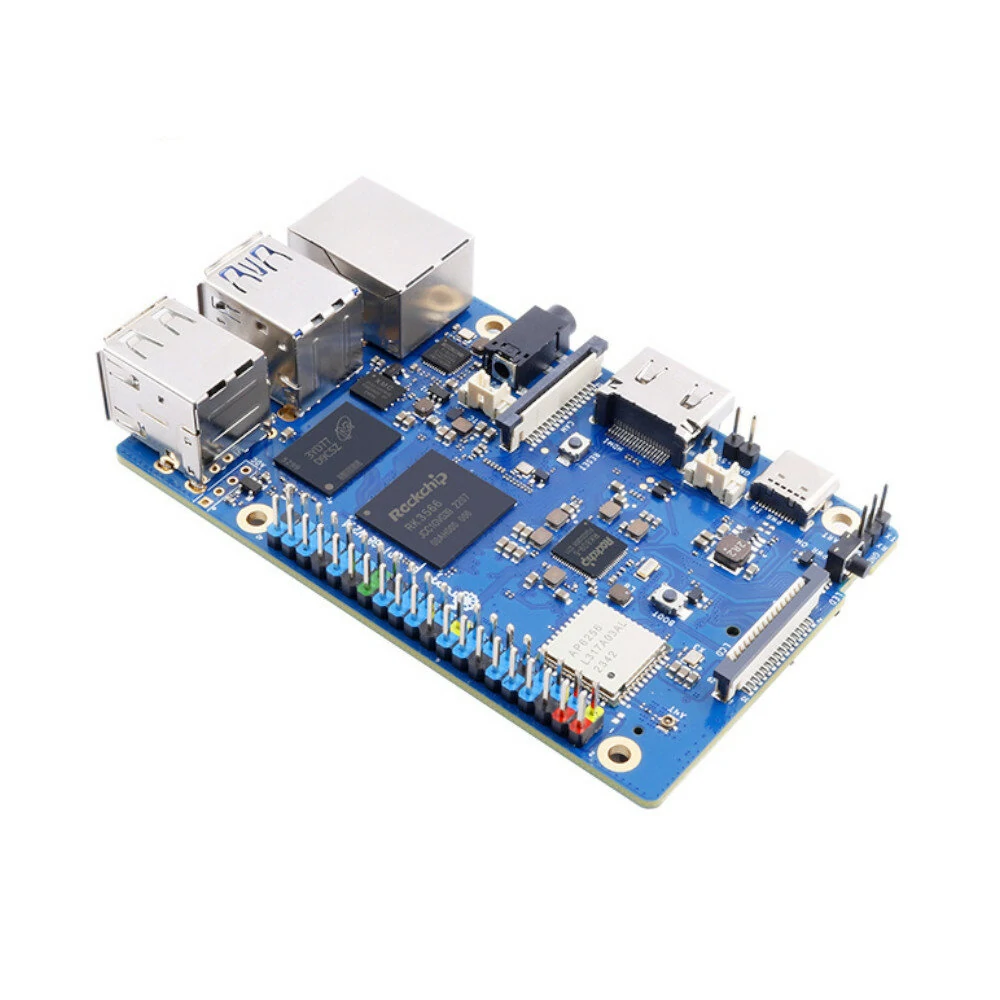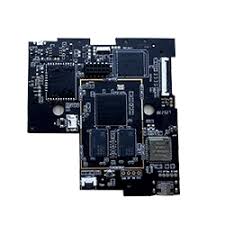
Venture into the sphere of Android application engineering for SBCs. This complete guide will provide you the primary ideas and actionable techniques to professionally engineer your own Android-fueled SBC projects. From learning the basic principles of Android programming to investigating elaborate world of SBC gadgets, this guide will support your a effective creation process.
- Uncover the wide range of available SBC systems and their individual capabilities.
- Gain proficiency in essential Android programming utilities, including Android Studio, SDKs, and emulators.
- Learn the intricacies of preparing your SBC platform for seamless Android functionality.
Explore best practices for formulating robust and responsive Android software tailored for SBC hardware constraints.
Formulating Android Apps for SBC Platforms
Exploiting strengths of a Single Board Computer (SBC) for Android application development is an increasingly prevailing approach. These compact and versatile units provide a cost-effective setting for building, enabling innovators to leverage the capabilities of Android without the need for a traditional hardware. By employing the SBC's resources such as its processor, memory, and connectivity options, developers can assemble Android applications that range from simple utilities to more complex systems. The competence to customize the hardware and software environment further magnifies the flexibility of SBCs for Android development, making them a advantageous tool for both students.
Harnessing Android Development Boards for IoT
For budding developers delving into the world of Internet of Things (IoT), Android dev boards present a adaptable platform to bring their novel ideas to life. These small-scale boards, often equipped with multifunctional hardware and easy-to-use software development kits (SDKs), provide a stable foundation for constructing a wide range of IoT applications. From home oversight systems to agricultural monitoring devices, Android dev boards empower groups to deploy cutting-edge IoT projects with ease.
- Employing the extensive Android ecosystem, developers can leverage a vast library of interfaces specifically designed for IoT solutions. This variety of resources allows for efficient development and supports the creation of complex IoT solutions.
- Also, Android dev boards often feature built-in connectivity options such as Wi-Fi, Bluetooth, and cellular, facilitating seamless networking with other devices and cloud platforms. This connectivity capability is key for enabling real-time data transmission and remote tracking of IoT platforms.
- As a final point, the community-driven models of Android dev boards fosters a thriving ecosystem of developers, providing ample backing for tackling any challenges encountered during the development process.
Examining Multimedia Uses of Android SBCs
The realm of multimedia applications is constantly expanding, pushing the boundaries of what's feasible. In this dynamic landscape, Android System-on-Chips (SBCs) have emerged as a effective approach for developers seeking to engineer innovative and engaging experiences.
The mentioned compact yet capable SBCs present a unique blend of processing power, connectivity, and multimedia strengths that make them excellent for a sweeping collection of applications.
Pertaining to high-definition video playback to live audio processing, Android SBCs are equipped to handle the requests of today's multimedia setting.
- Furthermore, their open-source nature supports developers to adapt hardware and software to meet specific application criteria.
- The described level of adaptability clears paths for developers to extend the limits of multimedia innovation.
Take Control of Android with SBC Development
A development board for example the Raspberry Pi or a Nexus Player affords a unique opportunity to adjust your Android experience. By directly interacting with the underlying architecture, you can refine everything from the user interface to specific apps. This level of command allows innovators to innovate and develop truly bespoke Android ecosystems. Whether you're hoping to refine your device's performance, study new capabilities, or simply fulfill your curiosity, a dev board can reveal a world of alternatives.
- Get acquainted with the fundamentals of Android development
- Build custom ROMs and kernels
- Experiment with new apps and features
- Associate your device to auxiliary equipment
Troubleshooting SBC Android Issues
When working with Android development on Single Board Computers (SBCs), you might encounter a variety of challenges. These can range from simple configuration errors to complex software bugs. Effective debugging and troubleshooting are crucial for identifying the root cause of these problems and restoring your Android environment to full functionality. Leverage the vast resources available online, such as forums and documentation, to gain insights into common issues faced by other developers in similar setups.
Start by carefully reviewing your event logs for any error messages or warnings that might provide clues about the problem. Develop a reliable logging strategy within your Android application to capture relevant information during runtime. This can help pinpoint specific areas where errors are occurring. Don't hesitate to explore different configurations and settings to see how they affect the behavior of your system.
- Commit time in understanding the hardware capabilities of your SBC, as limitations in processing power or memory can contribute to Android performance issues.
- Build a strong understanding of the Android SDK and its tools to effectively debug your applications.
- Stay updated with the latest distributions of both Android and your SBC's firmware, as these often include bug fixes and performance improvements.
Tuning SBC Android Platforms
When installing Android-based single-chip solutions SBCs, maximizing output is paramount. To achieve this, developers and engineers can leverage a collection of methods. This involves meticulously improving software and hardware components to maintain seamless functionality. Key areas for advancement include capacity planning, power consumption, network connectivity, and application speed.
- Accentuating real-time calculation is crucial for applications that demand immediate responses.
- Capitalizing on lightweight toolkits can significantly reduce memory load, thereby refining overall performance.
Regularly refreshing the Android operating system and platforms is important for addressing security loopholes and obtaining performance optimizations.
Implementing Android SBC Security Best Practices
Securing your Android platforms against threats is paramount. Implementing sound security best practices for your Android System-on-a-Chip (SBC) setup can significantly mitigate risks. Regularly refresh your SBC's software to address risks. Develop robust access safeguards to curb user permissions and network communication. Conduct scheduled security checks to identify potential vulnerabilities and execute necessary countermeasures.
- Coach your users about common security threats and best practices for protecting their devices.
- Defend sensitive data at rest and in transit using strong techniques.
By adhering to these best practices, you can create a more secure environment for your Android SBC.
Exploiting Sophisticated Android SBC Capabilities
The world of embedded Devices (SBCs) provides a compelling platform for developing innovative Android applications. By synthesizing the power of Android with the unique capabilities of SBCs, developers can create multi-functional solutions across diverse markets. This approach offers unmatched flexibility and customization options, facilitating the development of exclusive applications that cater to specific expectations. Whether it's for manufacturing control, SBCs coupled with Android development open up a wide range of possibilities.
- Leveraging the low-power nature of SBCs for resource-constrained environments.
- Building Android applications with prompt responsiveness for time-sensitive tasks.
- Combining Android's user interface capabilities with custom hardware peripherals for a smooth experience.
The combination of Android and SBCs empowers developers to push the limits of innovation, producing transformative applications that reshape various fields.
SBCs Emerging in Android's Future
The market of Android development is rapidly evolving, with Single Board Computers (SBCs) emerging as a prominent force. These compact and versatile machines offer developers a powerful platform for experimentation, prototyping, and even full-scale application deployment. With their affordability, expandability, and thriving ecosystems, SBCs are poised to refashion the way we develop Android applications. Builders are enthusiastically embracing this advanced paradigm, unlocking a world of possibilities for creating immersive user experiences.
From embedded solutions to integrated devices, SBCs provide the perfect groundwork for a wide range of Android projects. Harnessing the power of open-source software and hardware, developers can construct innovative solutions that handle real-world challenges.
Project Ideas Using Android SBCs
Android Single Board Computers (SBCs) are powerful little gadgets that can be used to develop a wide range of tasks. In case you're a beginner, there are plenty of exciting project ideas to explore. One popular category is home automation, where you can use an Android SBC to control your lighting. You could also construct a bespoke media center, display content on a larger screen, or even tinker with robotics and application building.
- Certain Numerous sbc for android Diverse Numerous
- Certain other ideas include prototyping educational tools, designing wearable apparatus, or even supporting open-source projects. The possibilities are truly immense.
